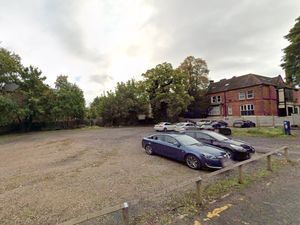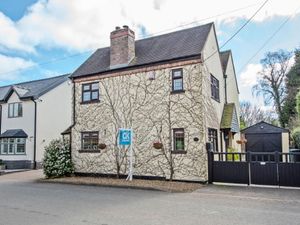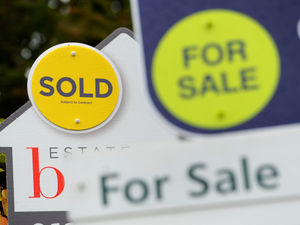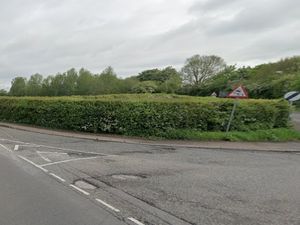Revealed: Hundreds of green spaces at risk of development in Black Country
Hundreds of green spaces in the Black Country are at risk of development as councils try to meet a housing shortage, it was warned today.
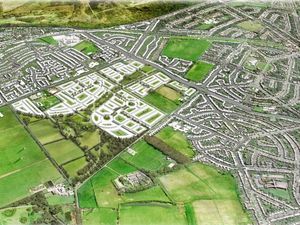
Developers are eyeing up land – including greenbelt – in areas across Dudley, Sandwell, Walsall and Wolverhampton.
The proposals include plans for thousands of homes on prized greenbelt land including sites in Bushbury, Moseley, Pedmore and Aldridge.
A 2017 local government review found that 20,000 homes are needed in the Black Country by 2036.
Since then developers have been invited to put forward land for development that will help tackle housing needs – with some of the proposed sites falling on green fields around the outskirts of the Black Country.
In Pedmore Common, Stourbridge, a proposed development has been put forward for 500 homes.
In Bushbury and Moseley, plans have been put forward to build 1,350 homes spread across both Wolverhampton suburbs.
Council bosses across the region insist they will always aim to prioritise brownfield sites, and the West Midlands Combined Authority has secured Government funding to bring old industrial land back into use.
Wolverhampton Council says it has identified areas for housing development, with the town having little greenbelt land at its disposal.
The authority’s housing chief, Councillor Pete Bilson, said: “The council will always to prioritise using brownfield sites.”
Walsall Council leader Mike Bird today said he was committed to opposing “unnecessary development” on the greenbelt land, although the area to the north east of the borough has been of particular interest to developers.
In Aldridge, at land south of Bosty Lane, proposals have been put forward for 1,450 homes on agricultural land.
Land in-between Streetly and Pheasey is being looked at for 1,500 homes in a project called Columba Park.
On the border between South Staffordshire and Wordsley, proposals have been made for 800 homes on the Lawnswood House Estate.
Dudley South MP Mike Wood said: “I don’t think we need to use greenbelt for housing. We should use brownfield sites for development. Greenbelt is so special for residents.”
None of the proposed developments, which are part of the Black Country Plan, have received planning applications so far.
Senior councillors believe many developments earmarked for greenbelt will never get the go ahead.
“Those greenbelt pieces of land would only be used as a last resort in Dudley,” said the town’s former council leader Patrick Harley, group leader of the borough’s Conservative group.
Developers 'eyeing up' our green fields
Developers have been accused of taking advantage of the Black Country’s housing shortage by “chancing their arm” on green belt sites.
The Express & Star today reveals that swathes of green belt land have been earmarked for new homes by developers, who were invited to put forward sites as part of the Black Country plan.
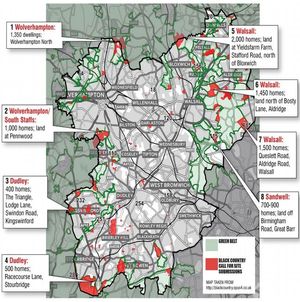
It has led to a series of proposals for new housing estates on the green belt, leading to concerns from council leaders who want to preserve rural sites.
Walsall Council leader Mike Bird said some developers were attempting to present plans as a “fait accomplis” long before they had even been considered by planners.
“Developers are causing great concerns by chancing their arm on many green belt sites in the borough,” he said.
“We are committed as a council to oppose any unnecessary development in the greenbelt until the housing supply on brownfield land is explored to its fullest extent.”
The desperate need for new homes has ramped up since a review in 2017, which said the region needed 20,000 new properties over the next 17 years to satisfy demand.
Details of proposed plots show dozens of green belt sites as possible new housing estates.
In Wolverhampton 1,350 dwellings have been put forward for land in Bushbury, while in Stourbridge 400 homes are planned for a site off Racecourse Lane.
Developers have suggested 2,000 homes for land off Yieldsfarm Road, north of Bloxwich, and up to 900 houses could be built on land in Great Barr.
Councillor Roger Lawrence, leader of Wolverhampton Council, said the plans were “suggestions not agreements”, adding: “Just because a proposal has been submitted it does not constitute an application nor is it necessarily going to be agreed.
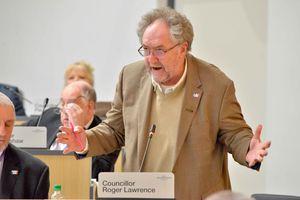
“The presumption is brownfield first and minor tidying of green belt areas around the fringe of Black Country.
“Wolverhampton has very little green belt, much of which is in council ownership. More likely are approaches about land in South Staffordshire around the edge of city.
“These are a matter for South Staffordshire, although they have a duty to consult Wolverhampton and we would be concerned about impact on our schools, doctors surgeries etc of any significant development.”
Sandwell has bucked the national trend in recent years, building hundreds of new council homes, but the authority’s leader Councillor Steve Trow conceded that many more were needed to meet a growing population.
“This is not just an issue in Sandwell, the Black Country or the West Midlands. There is a need for more homes to be built across the whole country,” he said.
“The council’s planning policy states that our preferred option is always to build on brownfield sites. Many of these sites have been vacant for years, are covered in grass and often get called greenfield – but beneath the surface is the legacy of previous industry and housing. Brownfield sites do present challenges for development as they are often privately owned and costly to build on due to contamination.
“There are bound to be some tough decisions ahead to meet the demand for housing given the West Midlands’ growing population. We are working with our Black Country neighbours to tackle this issue collectively.”
Andi Mohr, chairman of the West Midlands Green Party, said that building on green belt land was often considered the “easiest option” when faced with the expensive prospect of cleaning up brownfield sites.
“It’s very frustrating when new-builds go up in places that are simply not appropriate,” he said.
“Everybody agrees we need to prioritise brownfield sites for development, but it’s easier said than done – often house builders don’t want the extra expense that comes with cleaning a site up.
"Plonking new houses on green space is the easiest option for developers and councils.
"Sometimes – if it’s near train or bus connections and the green space is not home to wildlife – it might be fine to build there, but sometimes it feels like these things aren’t being properly considered in the push to build more homes.
“Councils don’t have many good options, but that’s not an excuse. Community-led housing projects are a way through this mess.
"They are a shared ownership model between residents and the community and involve those residents and neighbours in the design from the start.”
“They prioritise long term affordability, local transport connections and energy efficiency for cheaper and greener fuel bills. That’s got to be better than being dictated to by huge property developers.”
The viability of all sites put forward for development will be considered against the Government’s National Planning Policy Framework, as well as local planning policies.
On the sites submitted so far, Dudley Council’s deputy chief executive Alan Lunt, said: “There is no inference that any of the four Black Country authorities, who are jointly responsible for delivering the core strategy, support development on any of these sites. It is far too early to say.”

